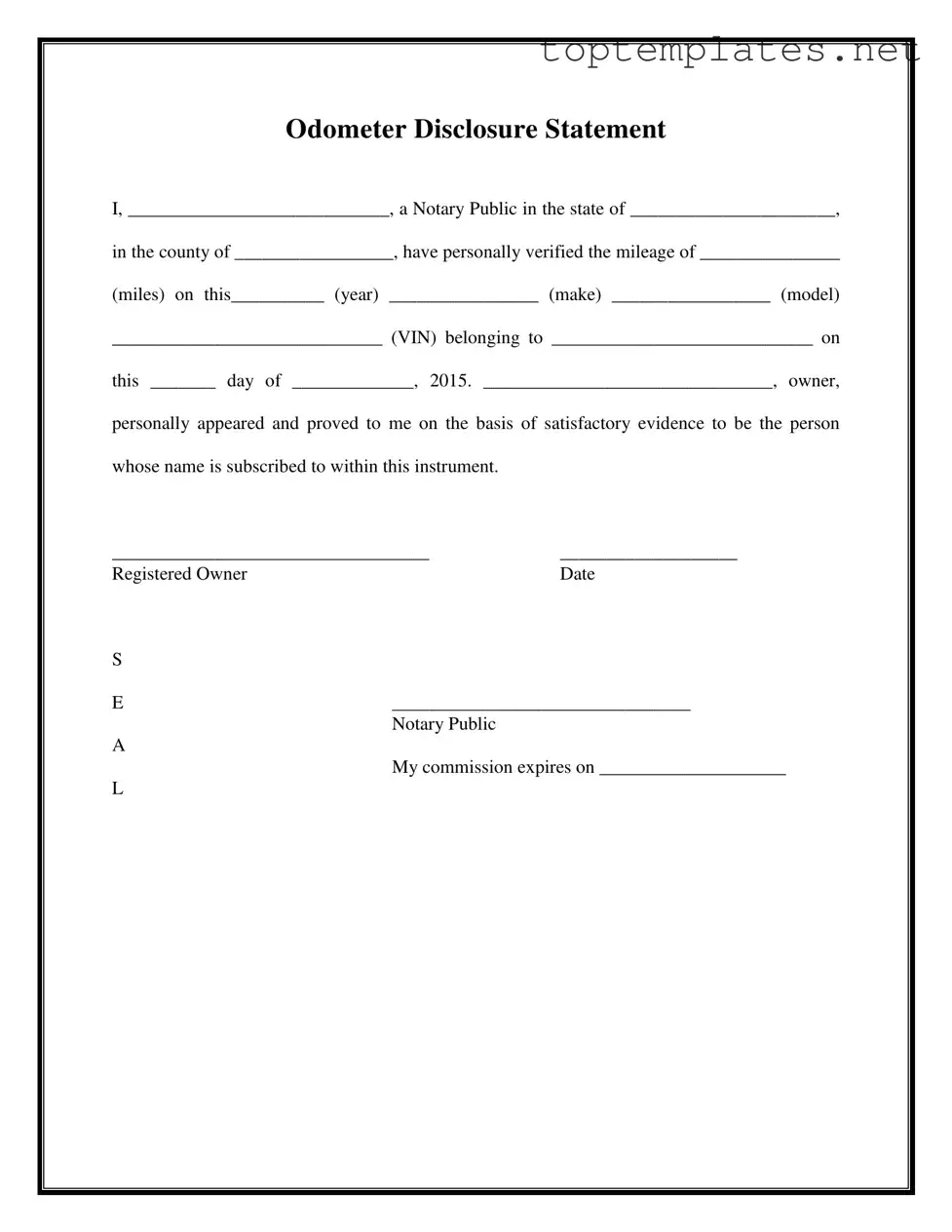What is a Notarized Odometer Statement?
An odometer statement is a document that officially records the mileage of a vehicle at the time of the statement's creation. When notarized, this document provides verified evidence of the vehicle's mileage, as witnessed and certified by a Notary Public. It's typically required during the sale of a vehicle to ensure that the odometer reading is accurate and to prevent odometer fraud.
Why do I need my Odometer Statement to be notarized?
Notarization adds a layer of security and authenticity to the document, making it more reliable and credible. It protects both the buyer and seller by ensuring that the odometer reading has been verified by a neutral third party. Many states require this step for the legal transfer of ownership to help prevent odometer tampering and fraud.
Who should complete the Notarized Odometer Statement?
The vehicle's current registered owner should complete the odometer statement. The Notary Public will then verify the owner's identity and the information provided before notarizing the document.
What information is required on the Odometer Statement?
The statement requires the vehicle's make, model, year, VIN (Vehicle Identification Number), and actual mileage. Additionally, the document must include the name of the notary, state and county of notarization, the date, and the signature of the vehicle's owner.
How do I find a Notary Public to notarize my Odometer Statement?
Notary Publics can be found at most banks, law offices, and post offices. Many shipping and parcel stores also offer notary services. You can also search for a Notary in your area by visiting the National Notary Association’s website.
Is there a fee to have my Odometer Statement notarized?
Yes, notaries typically charge a fee for their services. The cost can vary depending on your state and the location of the notary. However, some banks and institutions may offer free notary services to their members or clients.
What do I do with my notarized Odometer Statement?
Once notarized, your Odometer Statement serves as a legal document attesting to the accuracy of your vehicle’s mileage. You will need to submit this document to the appropriate state department or agency involved in the vehicle's sale, transfer, or registration process.
Can the Odometer Statement be electronically notarized?
In many states, electronic notarization is permitted and considered as valid as a traditional notary seal. You should check your local laws to confirm if you can have the document notarized electronically.
What happens if I provide false information on my Odometer Statement?
Knowingly providing false information on an Odometer Disclosure Statement is a federal offense. It can result in heavy fines and imprisonment. This action is taken seriously to protect consumers from fraud and ensure fair transactions.

